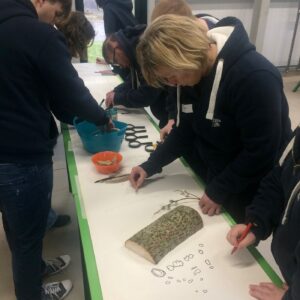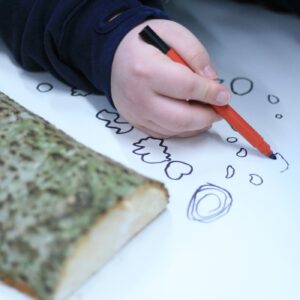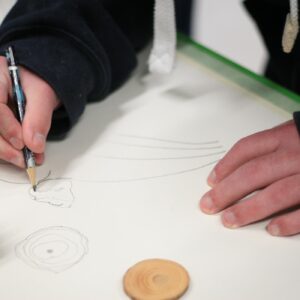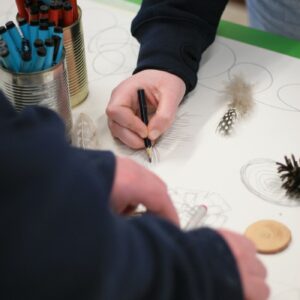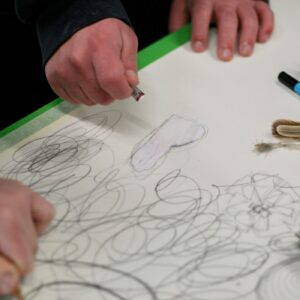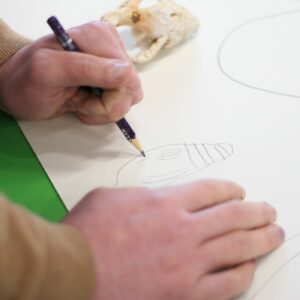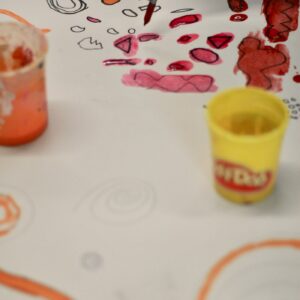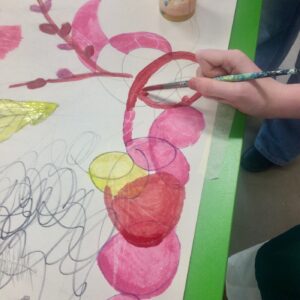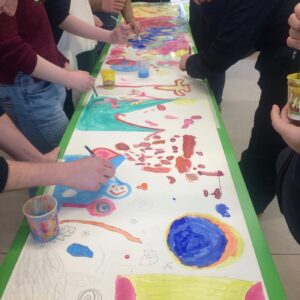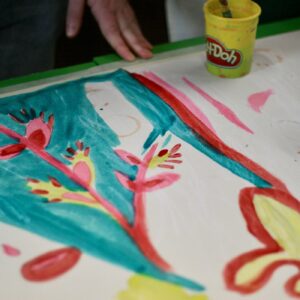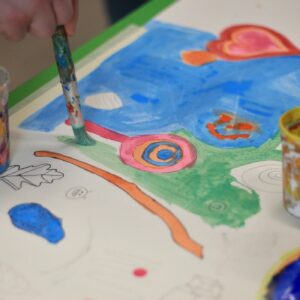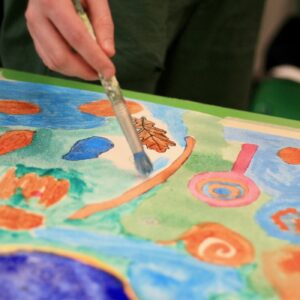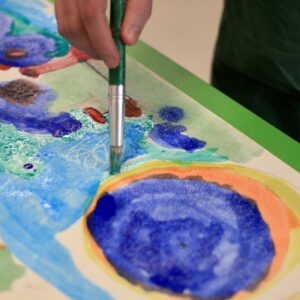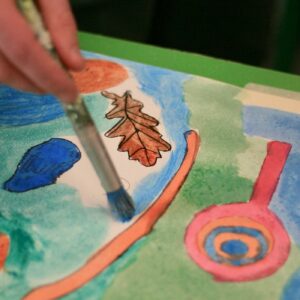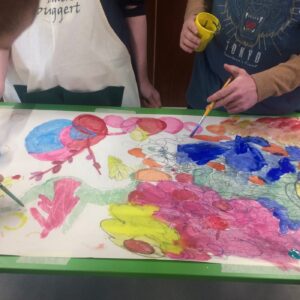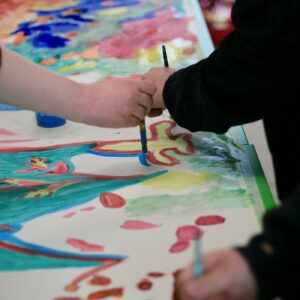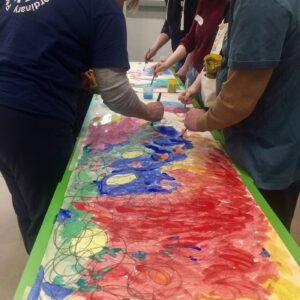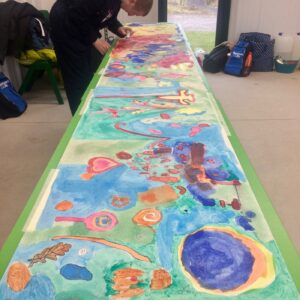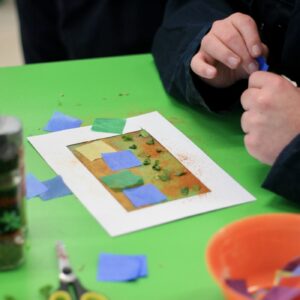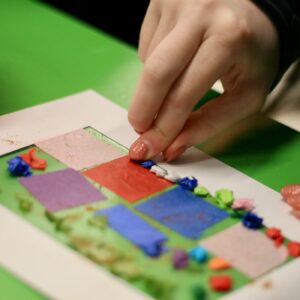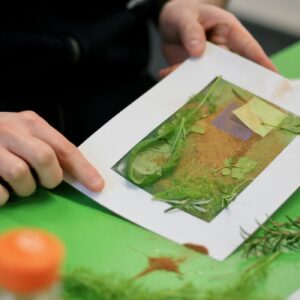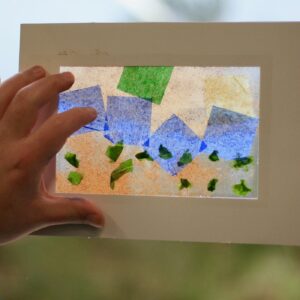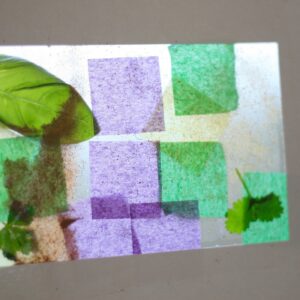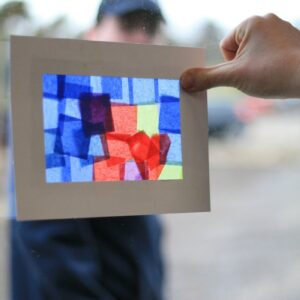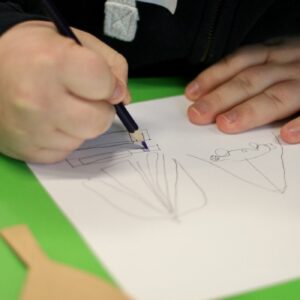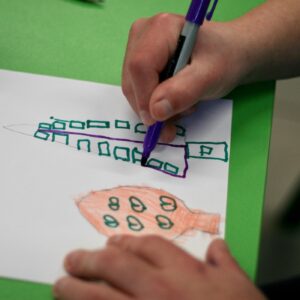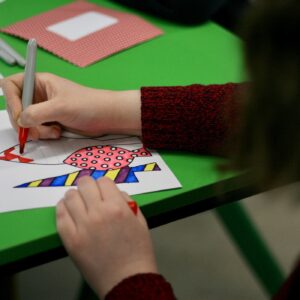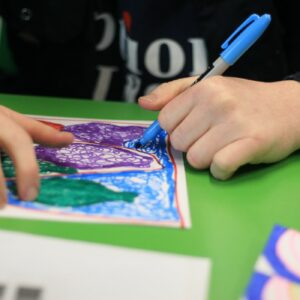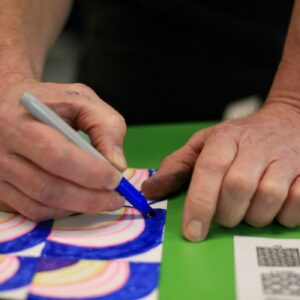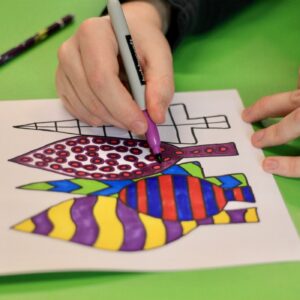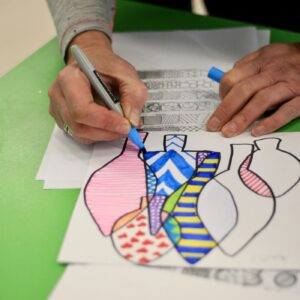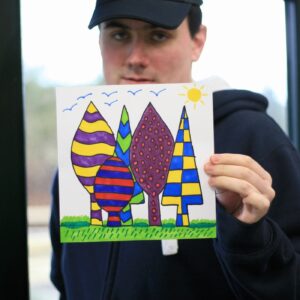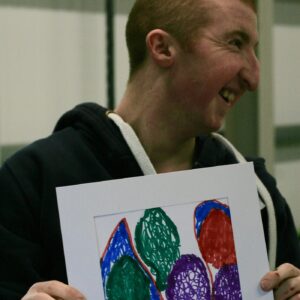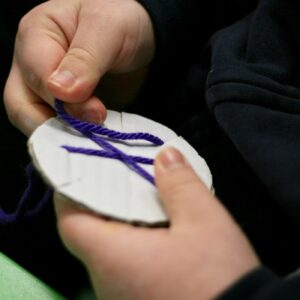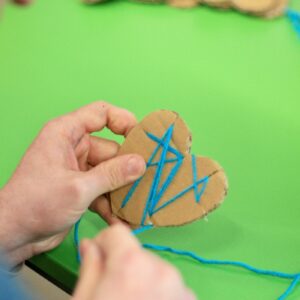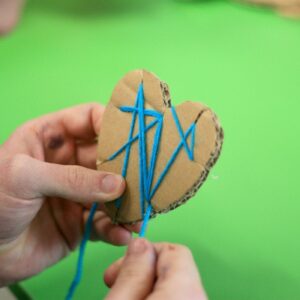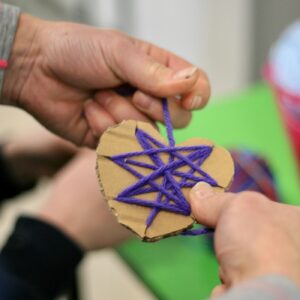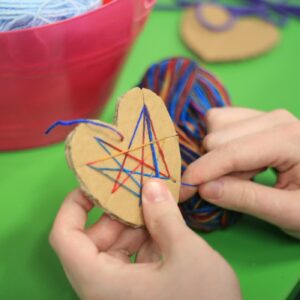I was recently invited by Murton Trust to run a series of workshops with Options in Life – a group of young adults with additional support needs. They are based in St Andrews and make regular trips to the nature reserve and farm at Murton to take advantage of the wonderful facilities, the skilled staff and of course, the outstanding natural beauty of the place!
I had the pleasure of meeting some of the group in October 2018 when they visited the rural skills hut – where I was undertaking a week-long artists’ residency, alongside Rachel Bower of Woven Willow, to develop our creative practice. We had invited members of the community to drop in and engage with our making. The Options in Life group spent much of their afternoon with us – it was clear then they had an interest in making and creating!!
When designing the workshop I wanted to ensure there was enough variety for each participant to try out different processes and materials – with a choice to work collaboratively or quietly by oneself.
Patterns in Nature: This was the main activity – it was a looking, drawing and painting activity, working collabortive.
Nature’s Stained Glass Sun-catchers: A sensory activity using edible and aromatic herbs and spices and coloured tracing paper to make a collage – a fun and engaging activity that encouraged participants to share experiences and guess the smells!!
Zentangle Trees: A drawing activity – a quiet and contemplative activity that gave the opportunity to those needing quiet time and space away from the main activity.
Yarn Hearts: Yarn wrapping – requiring a degree of manual dexteritory and utilising fine motor skills. This was a special Valentine’s Day themed activity for the group!
Patterns in Nature
Working collaboratively on a large sheet of paper participants were invited to use magnifying glasses to study shapes and patterns of natural materials: plants (leaves and flowers), pine cones, twigs, grains in pieces of wood, feathers etc.
Using a selection of materials (pencils, Sharpies, wax crayons) participants made marks inspired by the plants/objects. Once the paper was filled with marks and patterns, warm colours were used to paint the patterns and foreground and cold colours painted on the background.
This was a lovely, fun process resulting in beautiful, bold and colourful patterns, as well as demonstrating how colours work together and mix on the paper.
This project is a great example of collaborative working – it enables participants to lose inhibitions and is a good ‘ice breaker’ exercise. It’s a great way of creating together as a group and enjoying a shared experience while eliminating concerns about what they are making, and worries about ‘not being able to draw’. (*EVERYONE can draw!!!)
Nature’s Stained Glass Sun-catchers
Participants were invited to create beautiful ‘stained glass’ sun catchers using tissue paper and ‘sensory’ plants/herbs. We used leaves from plants such as basil, coriander, rosemary, fennel, parsely and marjoram as well as dried herbs and spices such as oregano, paprika, cinnamon and ginger.
The process of tearing, crunching and sticking not only smells great, but is a very engrossing activity. It encouraged participants to think about shapes, colour and patterns. Guessing the smells was great fun too!
Zentangle Trees
Participants were invited to create a forest of trees by either drawing tree shapes or using some simple tree inspired stencils I had made.
Participants were invited to create patterns inside the shapes of each tree using either pencil crayons or Sharpies. Everyone was encouraged to create a different pattern within each tree and think about the colour combinations. I provided pattern and mark-making inspiration sheets. The results were a lovely variety of colourful, pattern filled forests!
Yarn Hearts
This simple exercise involved wrapping yarn around a cardboard template. The template can be any shape, but given it was Valentine’s Day, we used hearts!! The process involves holding the heart in one hand and carefully turning it while wrapping colour yarn around it. The finished heart can be left with a ‘tail’ to be made into a hanging decoration.
